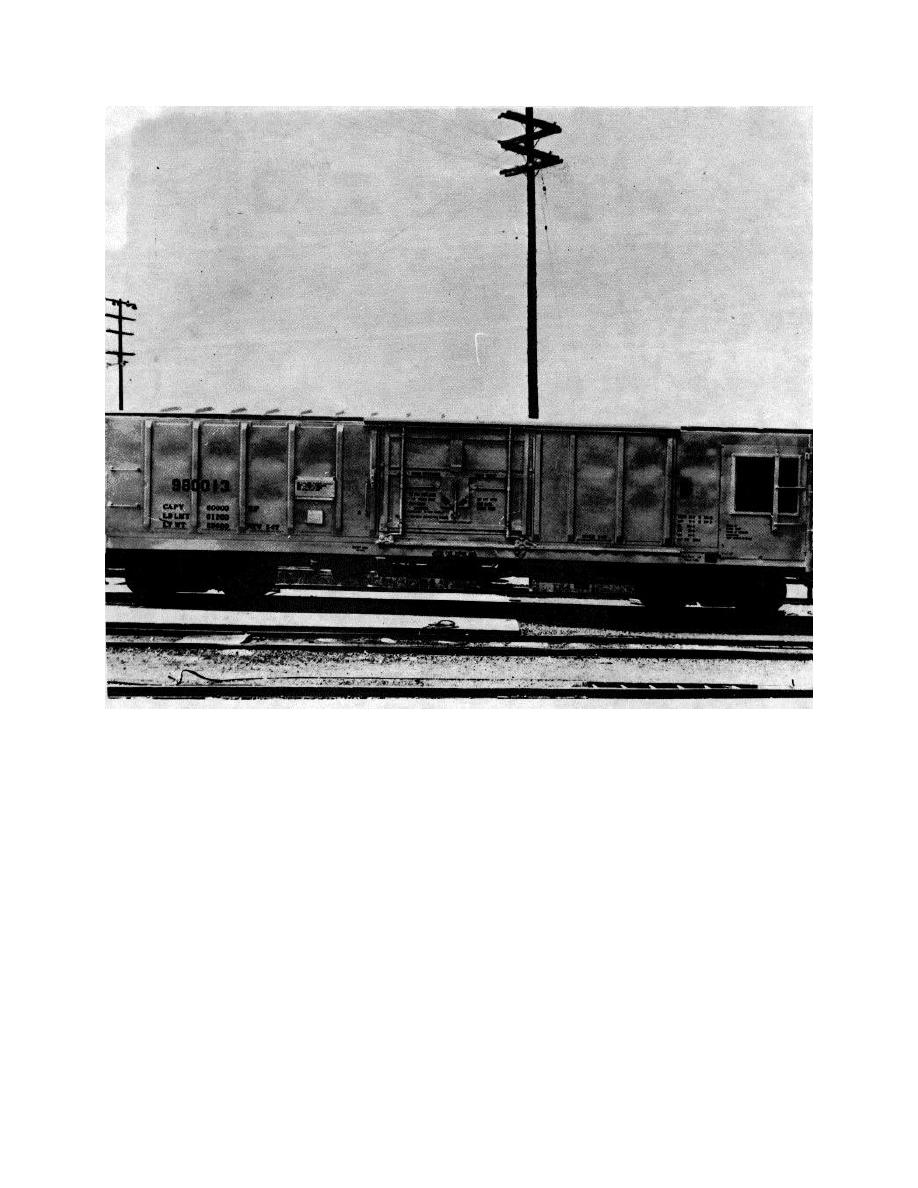
TM 55-203
Figure 2-2. Railway car (mechanical), refrigerator, 39 3/8-inch gage, 40-ton
8-wheel, foreign service.
lies flat on the deck of the car. Locking devices connect
built for passenger-train service. These flatcars have
the ends to the fixed sides of the car and are designed
steam, air signal, and airbrake trainlines and special
with interlocking features to prevent the spreading of car
trucks, brake gear, couplers, and draft gear to permit
sides at corners. Drop door hoppers facilitate the
service in passenger trains.
unloading of such commodities as coal and sand.
b.
Usage. Modern flatcars decks (or flooring)
2-6. Flatcars
usually are laid with heavy wood timbers to facilitate
blocking and bracing of various loads. Flatcars are
particularly suitable for outsize items, long objects such
a.
General. A flatcar is a freight car with a
as poles, steel beams, etc., which may extend over two
wooden or steel floor built over the underframe sills, but
or more cars. There are several types of special-
without a superstructure With load capacities ranging
purpose cars built from basic flatcar design The two
from 40 to 250 tons, flatcars are considered the
most commonly used in CONUS, but not presently in
workhorses of the railway service. Trucks, draft gear,
the military fleet, are the double-deck and triple deck
couplers, safety appliances, and brake gear are identical
cars designed specifically for the transport of vehicles
with those of other types of freight-car equipment With
and the flatcars with built-up end walls used primarily for
the exception of the US Army 100-ton capacity, heavy-
movement of logs and lumber
duty flatcars (shown in fig. 2-5(1)), no flatcars have been
2-3


 Previous Page
Previous Page
